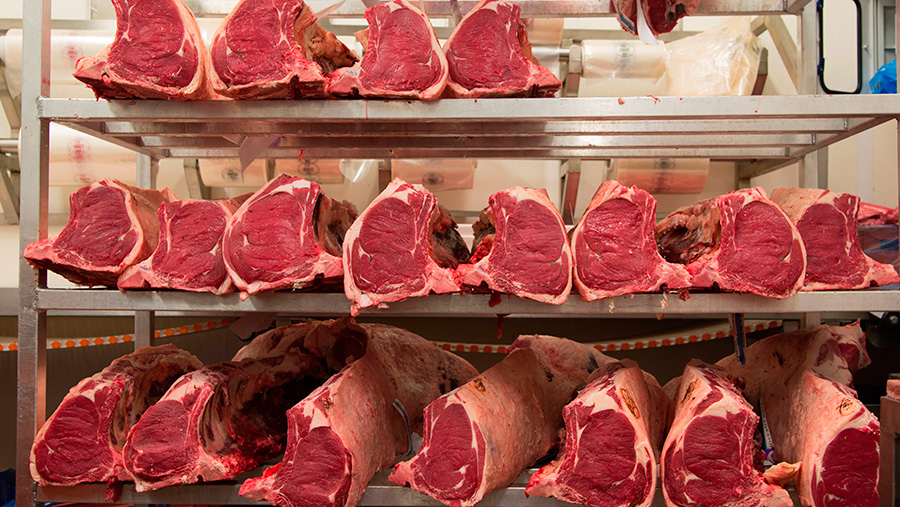Scots red meat sector fears post-Brexit shrinkage
 © FLPA/John Eveson/REX/Shutterstock
© FLPA/John Eveson/REX/Shutterstock Any drop in livestock supply following the UK’s decision to leave the EU would have a devastating impact on the Scottish red meat industry, which has called for government incentives to ensure its survival.
In 2015, Scotland’s red meat abattoirs processed 459,300 cattle, 1.34 million sheep and 303,000 pigs, said the Scottish Association of Meat Wholesalers (SAMW) in a paper presented to cabinet secretary for rural development, Fergus Ewing.
“Any reduction in supply levels, due to confusion over the duration of the Brexit transition, or the lack of a sound domestic and export strategy, would signal the end of the Scottish red meat industry in its present form,” it claimed.
With 72% of all cattle, 89% of all sheep and 93% of all pigs passing through just five abattoirs in Scotland, if just one of them were to close, the industry would suffer a significant loss of market share.
Indicators
As such, the SAMW is calling for the “earliest possible indication” of what will replace the CAPand the subsidies available for Scottish farming.
“Farmers are already mating cows and making decisions about producing livestock for a period when we may be outside the EU, with no knowledge of what the market may look like,” said the paper.
It also estimated that there were some £2.5bn worth of older cattle, sheep and pigs already in the pipeline, which would be processed over the next two-and-a-half years.
“For these reasons, some early reassurance about CAP payments and the future shape of support will be crucial to giving farmers some confidence to continue producing livestock at current levels.”
In particular, SAMW is calling for incentives for livestock farmers, such as headage payments, deficiency payments, quality improvements and measures to retain livestock in Scotland
“Meat processors also need incentives over and above a secure and increasing supply of livestock,” it added.
“These might include slaughter premia, export credit guarantees, capital grants and preferential loans.”
